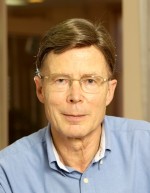
Research School of Earth Sciences
The Australian National University
Professor Lambeck is a globally pre-eminent geophysicist who has made fundamental contributions to understanding Earth’s rotation, the strength of Earth’s mantle and its role in plate tectonics, and the complex global geometry of sea level variations associated with ice sheet melting. His work has fundamentally influenced a range of disciplines from geophysics to oceanography, glaciology and archaeology.
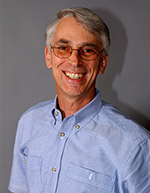
Research School of Chemistry
Australian National University
Professor Evans has made outstanding contributions to extending classical statistical mechanics to modern systems. He is regarded internationally as the originator of the Fluctuation Theorems, which extend our understanding of the thermodynamics of small systems observed over short time. His work resolves unsettled foundations in thermodynamics that persisted over 100 years, unifies the field of thermodynamics, and provides rigorous simulation methods that are widely used today.
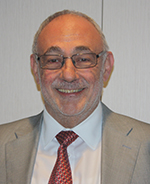
School of Mathematics and Statistics
The University of Sydney
Professor Lehrer has made highly influential contributions to algebra and geometry. Among the highlights are his co-invention of the theory of cellular algebras in the decade’s most highly cited Australian mathematical work, his development of “Howlett-Lehrer theory” to solve decomposition problems in algebra and geometry, and his development of “Springer-Lehrer theory”, with geometric and algebraic applications. His recent joint solution of the second fundamental problem of invariant theory has resolved a question of 75 years standing.
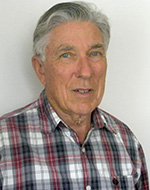
Mathematical Sciences Institute
Australian National University
Professor McIntosh works at the boundary between harmonic analysis and partial differential equations, two pillars of modern mathematics and physics. He is famous for having given with his collaborators the final answer to the Kato conjecture, a question raised in 1961 which puzzled specialists for 40 years. The techniques that he and his co-workers have developed have revolutionised the way we analyse the fundamental operators of physics.
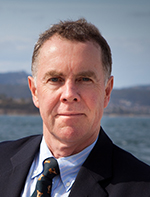
School of Mathematics and Statistics
University of New South Wales
Professor McDougall is internationally renowned for his ground-breaking work on ocean mixing processes and the thermodynamics of seawater. He has identified new mixing processes; defined neutral density surfaces along which mesoscale eddies mix; shown how lateral mixing processes should be included in ocean models; and redefined all the thermodynamic variables used in oceanography. His discoveries have improved ocean climate models and changed the way oceanographic data are analysed, increasing the accuracy of the science and confidence in models of the coupled atmosphere-ocean-ice climate system.
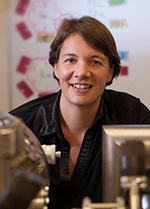
ARC Centre for Excellence for Quantum Computation and Communication Technology
University of New South Wales
Professor Simmons has pioneered a radical new technology for creating atomic-scale devices producing the first ever electronic devices in silicon where individual atoms are placed with atomic precision and shown to dictate device behaviour. Her ground-breaking achievements have opened a new frontier of research in computing and electronics globally. They have provided a platform for redesigning conventional transistors at the atomic-scale and for developing a silicon-based quantum computer: a powerful new form of computing with the potential to transform information processing.
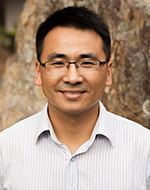
Department of Earth and Planetary Sciences
Macquarie University
Dr Yang is responsible for a major breakthrough in the treatment and interpretation of seismic data, which has opened up the use of ambient noise signals to decipher structures in Earth’s crust and upper mantle. Up to now, earthquakes or explosions had been necessary to generate seismic data; with Dr Yang’s method the background creaks and groans of Earth can be used to make images of the internal structure of Earth.
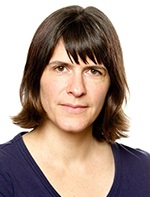
School of Mathematics and Statistics
University of New South Wales
Associate Professor Greenhill is internationally recognised as a leading expert in asymptotic, probablilistic and algorithmic combinatorics, undertaking research at the interface between combinatorics, probability and theoretical computer science. By studying fundamental combinatorial objects, such as graphs, she tackles problems of major significance to pure mathematics. Her highly-cited research achievements include new formulae and algorithms that have found broad application in many areas, from statistics to computer science, physics and cryptography.
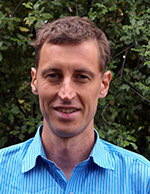
Mathematical Sciences Institute
Australian National University
The interaction of quantum particles or quasi-particles in two dimensions involves a so-called “fusion category” which describes the possible outcomes of collision between the quasi-particles. Diagrams describing the fusion category are analogous to the Feynmann diagrams well known in quantum field theory. Dr Morrison has made remarkable discoveries especially in this diagrammatic description of such low-dimensional processes. In particular he has classified the least complicated such theories that mathematics permits.
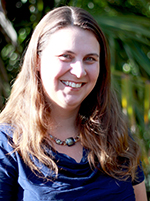
Research School of Earth Sciences
Australian National University
Dr Abram’s pioneering research addresses the past behaviour of the Earth’s climate system, and implications for anthropogenic climate change. Her outstanding research portfolio has generated unique new records of past climate and environmental impacts from regions spanning the tropics to Antarctica, and assessing these alongside state-of-the-art climate models. Her high- impact work has led to groundbreaking advances in understanding how climate change is impacting Southern Ocean winds, Antarctic temperatures and Australian rainfall patterns.
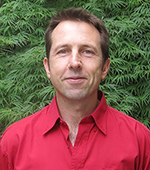
Department of Biological Sciences
Macquarie University
Plants grow by investing in leaves, which return revenue by photosynthesis. In Australian field studies and also through international collaborations, Dr Wright has elucidated major patterns governing investment in leaves. He has found there is an economic spectrum for leaves running from cheap to expensive leaf construction, with returns correspondingly running from quick to slow. On low nutrient soils, there is more expensive construction which confers a longer leaf lifespan. In dry environments, there is more nitrogen invested in leaves which economises on water use.
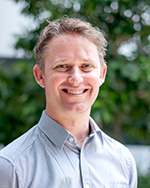
Structural Biology Division
Walter and Eliza Hall Institute of Medical Research
Dr Czabotar’s research is delivering new insights into the molecular control of programmed cell death, an important biological defence mechanism that removes dangerous cells from the body including those involved in tumourigenesis. He has played a key role in the development of therapeutics that induce cell death in tumours and his recent work provides new strategies for developing agents to treat disorders characterised by excessive cell death such as neurodegeneration.
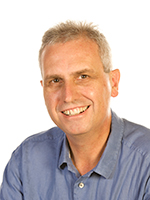
Head, Global and Tropical Health Division
Menzies School of Health Research
Professor Anstey has undertaken clinical research on malaria and tuberculosis with partners in the Asia–Pacific. He has identified new ways that the malarial parasite causes severe infections, translating these findings to clinical trials of agents that improve blood supply to vital organs. He has also undertaken clinical trials of drugs to treat all three major species causing malaria in the Asia–Pacific region. He is using his results to contribute to policy change nationally, regionally and globally.
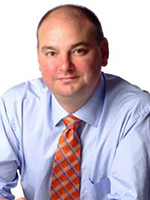
Monash Obesity & Diabetes Institute
Monash University
Professor Cowley has discovered how the body informs the brain about the amount of body fat we have and how much sugar there is in our blood. Through his understanding of these metabolic pathways in the brain, he has devised new drugs to treat obesity. He has also recently discovered why obesity causes high blood pressure. He has received several awards for his research, and now leads a global effort to find new drugs to treat diabetes.
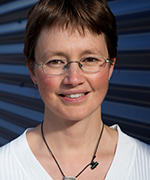
ANU College of Engineering and Computer Science
The Australian National University
Associate Professor Catchpole's research focuses on using nanotechnology to make solar cells cheaper and more efficient. Associate Professor Catchpole’s major achievements include showing that the efficiency of thin solar cells can be improved using tiny metal particles, which act like antennas to direct light into the solar cell. This has opened up a range of new possibilities for reducing the cost of solar electricity.
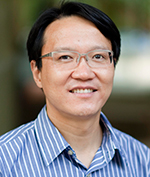
Australian Institute for Bioengineering and Nanotechnology
The University of Queensland
Professor Yu is an internationally recognised materials scientist who has made significant contributions in the innovation, design, preparation and application of novel nanomaterials.
He has developed new strategies to design functional nanostructured composites and is working on a diverse range of applications for these materials including novel platforms for the delivery of vaccines, genes and drugs for human and animal healthcare, innovative approaches for biomolecule enrichment and the synthesis of functional materials for water treatment and lithium ion batteries.
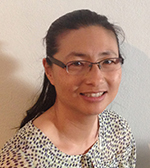
School of Mathematics and Statistics
University of Sydney
Associate Professor Yang is an applied statistician who has made significant contributions to the development of statistical methodology for analyzing molecular data arising in contemporary biomedical research. Her work on removing extraneous variability for microarray data has been incorporated in major software packages used worldwide to identify gene expression patterns. She has also developed novel methods for integrating molecular and clinical data and has already made an impact on Melanoma research by identifying potential genes that help with predicting survival outcome.
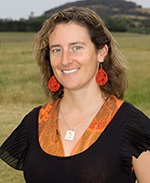
School of Mathematics and Physics
University of Queensland
Associate Professor Davis uses astrophysics to test our fundamental laws of physics, and study the nature of dark energy and dark matter. She is one of the most highly cited astrophysicists in the world. Her contributions include testing advanced theories of gravity, measuring time-dilation of distant supernovae, using galaxies to measure the mass of the lightest massive particle in nature (the neutrino), and discovering that active galaxies fuelled by black holes can be used as standard candles.
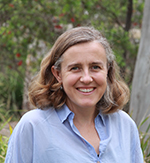
Research School of Astronomy and Astrophysics
Australian National University
Dr McClure-Griffiths is an internationally recognised radio astronomer, who has used “The Dish” at Parkes and other Australian telescopes to make stunning new discoveries about our home Galaxy, the Milky Way. Her research has provided unprecedented insights into how the Milky Way is structured, lives its life, and interacts with its neighbours. She has unravelled the complicated pinwheel-like structure of our home Galaxy and has helped explain how the Milky Way keeps finding fresh gas to make new stars.
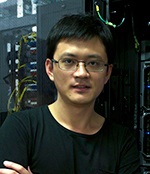
Queensland Brain Institute
The University of Queensland
Dr Yang has developed novel statistical analysis methods to show that individual differences between people for many characteristics are due to the cumulative effect of many genes. He solved the problem that genes identified from recent large-scale genetic studies explained only a small part of the genetic basis of characteristics such as height or susceptibility to disease. He has distributed his software tools widely and many researchers now apply his statistical genetic methods to their data.
© 2025 Australian Academy of Science